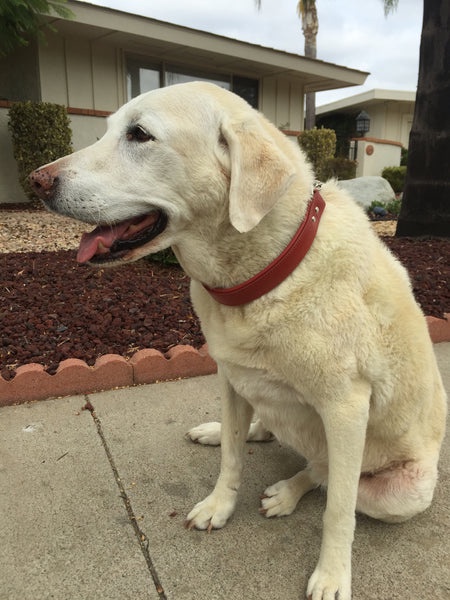The best type of dog collar to stop pulling depends on the individual dog's size, breed, temperament, and training needs. Different collars serve different purposes, and it's essential to choose one that aligns with your training goals and your dog's comfort and safety.
Here are some common types of collars used to address pulling:
-
Flat Collar: This is the most basic type of collar, usually made of nylon or leather. It is suitable for well-trained dogs that don't pull excessively. However, if your dog pulls a lot, using a flat collar may not provide enough control.
-
Martingale Collar: Also known as a limited-slip collar, this type tightens slightly when the dog pulls, preventing them from slipping out of the collar. Martingale collars are gentler than choke chains and can be helpful for dogs with slender necks or those prone to slipping out of regular collars.
-
Head Collar (Gentle Leader or Halti): This collar fits around your dog's muzzle and behind their ears. When the dog pulls, the head collar will gently turn their head back towards you, encouraging them to stop pulling. Head dog collars leather can be effective, but some dogs may take time to get used to wearing them.
-
No-Pull Harness: A front-clip harness is designed to attach the leash in the front, on the dog's chest. When the dog pulls, the harness redirects their attention back to you. This type of harness provides better control over pulling and is less likely to cause injury than traditional collars.
-
Prong Collar (Pinch Collar): This collar has metal prongs that put pressure on the dog's neck when they pull. It is a controversial tool and should only be used under the guidance of a professional dog trainer. Prong collars can be effective for some dogs but may not be suitable for others, and they have the potential to cause physical and behavioral harm if not used correctly.
Remember, using any training tool, including collars, should always be accompanied by positive reinforcement-based training methods. It's important to be consistent, patient, and kind while teaching your dog to walk politely on a leash. Seek advice from a professional dog trainer if you're unsure which collar would be best for your specific dog and training goals.


No comments yet